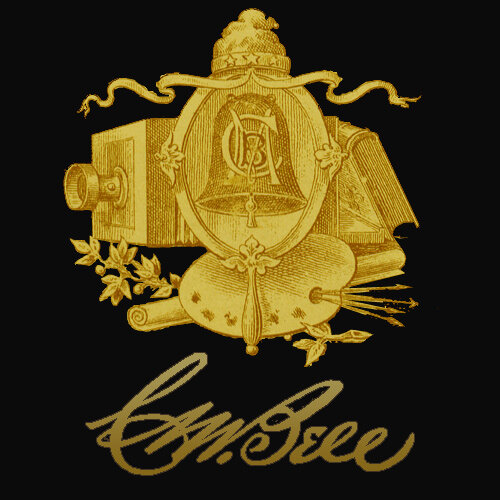
Annie Colley Bell, 1857 - 1932
. . . from the family materials of Colley W,. Bell (son of Charles Milton Bell)
Annie Colley
As she lay dying in her son's home on College Point, Long Island under a gray-skied Halloween 1932, Annie Colley was melting away from a life that had frozen the faces on glass plates of the known and unknown. She was surrounded by the family of her youngest son, Colley., his wife Francis and three boys, Colley, Jr., and twins, George, and William. She was the devoted wife of famed photographer Charles Milton Bell of Washington, D.C.
Annie was 36 years old in 1893 when her husband returned from a wet, cold trip to Fort Monroe, Virginia fell ill, and died in Washington’s Windsor Hotel. It would be there that she and her two sons would come to terms with the loss of a father.
Annie would struggle to keep the studios and gallery operating with her two sons. The famous Civil War studios of Brady and Gardner were gone by the early 1870s, and C.M. Bell's work took prominence on Pennsylvania Avenue. Soon George Eastman's Kodak camera would make ubiquitous, the "Kodak Moment" introduced in 1888. The production of Kodak's popular Brownie Camera in 1900 only increased the studios' pressure to profit as Annie faced enormous market forces. In that same year, Annie sold the studio and over 30,000 glass plate negatives to new proprietors who kept the name "C. M. Bell Studios" until 1910. Annie's sons, Charles, Jr. and Colley, were pursuing careers in engineering and law respectfully.
The Bell home of Annie’s son, Colley Bell (1920-1955) today near College Point, NY
Charles, Jr. left Washington to advance his passion as an electrical engineer. Young Colley, a lawyer, stayed close to his mother in Washington, D.C., while working as the personal secretary to Chief Justice Fuller and Justice Charles Evans Hughes. In 1910 young Colley married Carl Bushby, the daughter of Rev. William Bushby, an Episcopal minister and teacher at National Cathedral School for Girls. Carl, suffering from tuberculosis during the courtship, died seven months after the June wedding. Colley's son, Colley, Jr., learned of his father's loss when locating a box in the back of the lawyer's rolltop desk in the mid-1960s after his father’s death. The paper box contained Carl's white gloves, shoes, lace, and personal papers. Annie and her son Colley would be inseparable following this chapter in their lives.
As for the thousands of class negatives boxed in storage facilities? Eventually, Alexander Graham Bell (no relation) would acquire the glass negatives' cases decades later to see them safely passed to the Smithsonian Institute. In a historical irony, as Kodak faced its decline in the face of digital photography, the Library of Congress painstakingly opened the crates of Bell's glass negatives. For several years, curators and librarians of the Library of Congress carefully digitized and cataloged C.M. Bell's glass plates. The Bell family now presents this web site as an ongoing study and discovery in Charles and Annie's work. What had seemingly melted away in a museum storage facility is revealed to live another day in our American Experience.
Carl Busby and Colley Bell highlighted among friends in 1910. Colley married Carl eight months before her death. Carl was the daughter of Rev. William and Mary Bushby.




